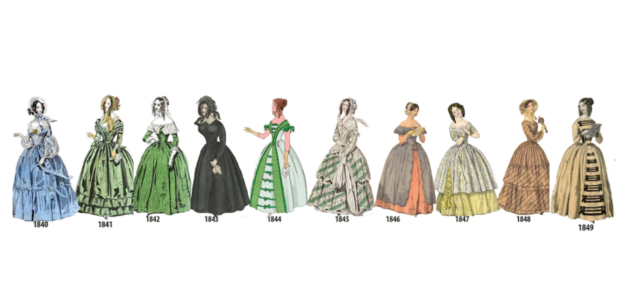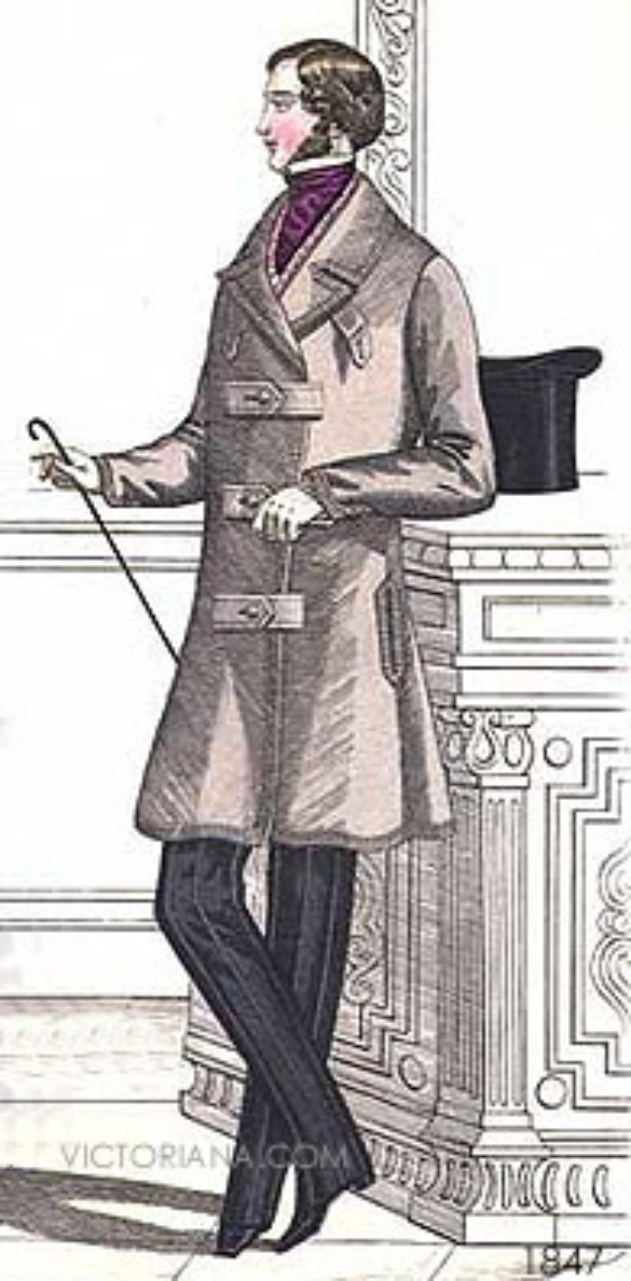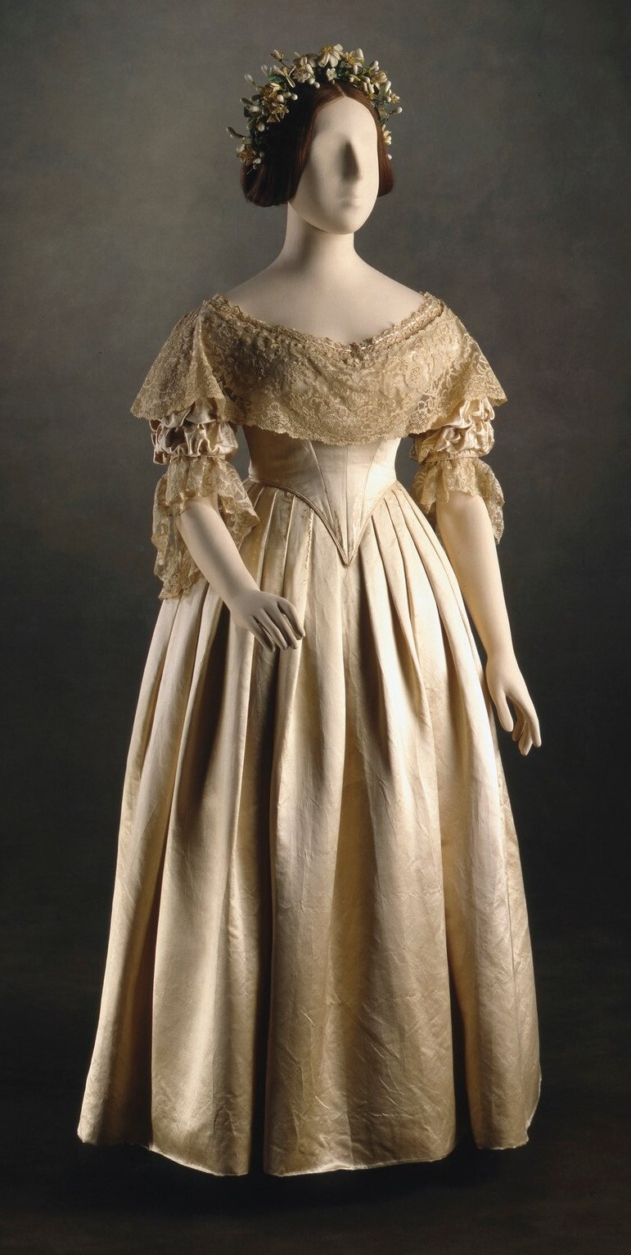1850’s Style: Prince Albert's Influence on Fashion
The previous blog post in this series looked at the influence of Queen Victoria’s wedding dress on 1840’s fashion. Following on from this, we’re now focusing on Prince Albert’s influence on men’s Fashion in the 1950’s.
1850’s Men’s fashion
In the 1850s men’s fashion became bolder and more stylised. This was evidenced by wider lapels on the frock coats, which also started to become more loosely fitted. The waistcoats became more boldly patterned with metal buttons.
A Princely Fashion
In fact, the style of men’s fashion still very much followed that set by Prince Albert the decade before. He made the large, distinct, mutton-chops and moustache fashionable. Men also tended to have a side-parting to their hair with an elaborate, high wave at the front. High upstanding collars on shirts and large, asymmetric bow ties, tied at the neck, also followed Prince Albert’s style (shown in the picture of Three English Gentlemen below).
Coats were mainly in the style of tight-fitting frock coats that fastened high up to the neck, but sack coats were also becoming more fashionable. These were loose-fitting jackets that reached down to the mid-thigh (shown by the man on the right in the picture of Three English Gentlemen below left and the picture of the working-class men to the right). They would later become the modern suit coat.
This was also the decade the Bowler Hat was invented (around 1850), but it was seen as a working man’s hat and so not worn by members of the middle- and upper-class, who favoured Top Hats.
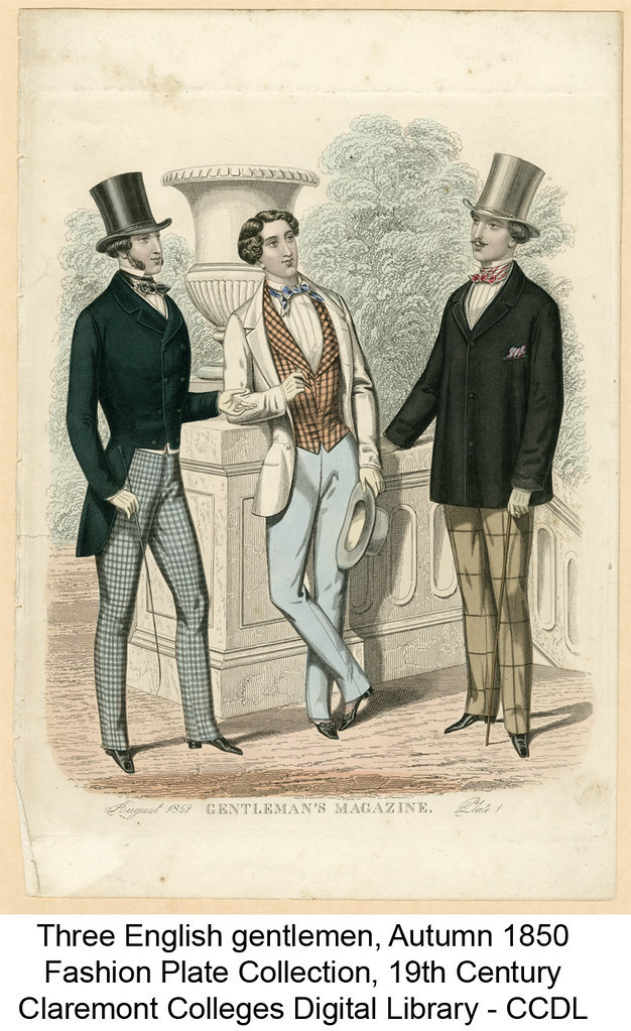
1850’s Women’s Fashion
In contrast to men’s style, women generally parted their hair in the centre and tied it back in a bun or side coils, with deep bonnets. The indoor cap, commonly worn at home to cover the hair, decreased to ribbons or lace worn at the back of the head. Generally, the style was conservative and not as elaborate as in the coming decades.
Feminist Intentions
The main changes in fashion were Bloomers (introduced in 1851) and Hoop skirts (1856). Bloomers, often trimmed with lace, were taken up as part of the feminist movement against masculine ideas about what constituted appropriate fashion for women. Prominent Women’s Rights advocates of the time, Libby Miller, Elizabeth Cady Stanton and Amelia Bloomer (writer of the groundbreaking reform paper The Lily) were pioneers of the fashion, Amelia sharing her name with the liberating garment. Bloomers became popular in the early 1850s but fell out of fashion after failing to take off in America - because of a feeling that they lacked decorum!
The hoop skirt was more successful and greatly altered the shape of women’s skirts. It was often worn over a crinoline petticoat and had three-tiers or deep flounces in it to increase fullness. Paisley patterned shawls also became fashionable at this time. The fabrics were mainly linen or cotton, with silk or wool less common.
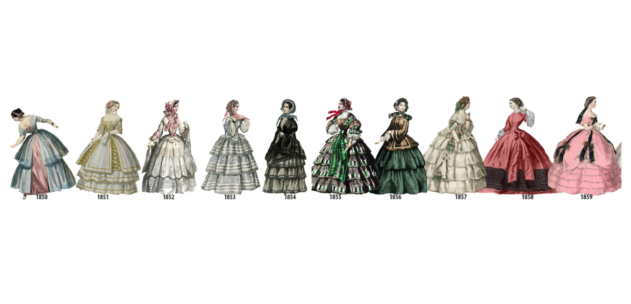
In our next blog, we'll take a look at the fashions of the 1860s, helping you to date those old family photographs by the clothing.
